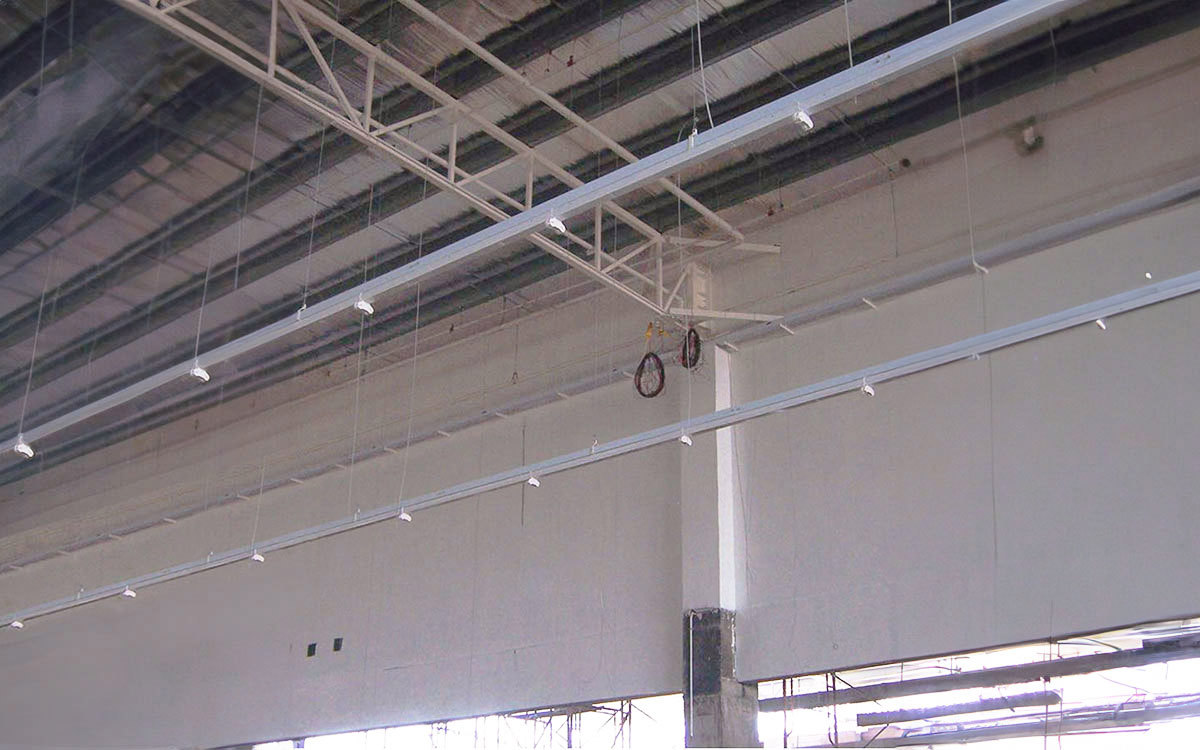Promat Technical Support
Contact our technical support team with your questions on passive fire protection solutions, our products and systems or installation advice...
In the bustling urban landscapes of the Asia Pacific, architects and engineers face a pressing challenge: safeguarding large-scale structures from the devastation of fire. Modern construction techniques have given rise to larger buildings with complex designs, introducing unique challenges related to fire protection and safety. For professionals overseeing these projects, it's not just about creating visually appealing spaces; it's about ensuring the safety of inhabitants and the integrity of the structure. This white paper delves into advanced fire protection solutions that address compartmentation, structural protection, fire stopping, ventilation, and smoke extraction.

In large-scale architectural designs, concealed spaces within fire compartments can become potential pathways for fire and smoke spread. Cavity and smoke barriers are critical in preventing this lateral movement, ensuring that fire and smoke do not compromise adjoining sections of a building.
For architects and engineers, understanding the difference between barriers located within concealed spaces and those coinciding with compartment walls is pivotal. If a barrier is in line with a compartment wall or floor, its fire performance must align with the adjoining structure. However, when located between compartment walls, it serves as a cavity barrier, typically offering 30-minute integrity and 15-minute insulation, contingent upon local regulations.
Depending on their size and placement, cavity barriers can be categorised into large or small, each with varying performance requirements. These barriers are vital, especially in open and vast spaces like atriums, where limiting the smoke and flame movement is imperative.

Modern constructions, such as the Carrefour warehouse in Klang, Malaysia, often incorporate sophisticated designs which include concealed spaces, interconnected floor levels, and intricate ventilation systems. While these designs are aesthetically pleasing and functionally efficient, they can inadvertently provide pathways for smoke and fire to spread rapidly, posing a significant threat to the building’s occupants and structural integrity.
Cavity and smoke barriers act as the unsung heroes in these architectural giants. They systematically block these pathways, preventing the movement of smoke and fire within concealed spaces. For instance, during a fire outbreak, smoke – known to be more lethal than flames in many instances – can easily seep into hidden voids within walls or partitions. If unchecked, these can act as conduits, allowing smoke to infiltrate multiple areas quickly. Barriers prevent such incidents, ensuring that these concealed spaces do not become death traps.
Guided by regulatory frameworks, architects and engineers specify the locations of these barriers within a building. These regulations not only delineate where such barriers must be placed but also detail the minimum performance standards they must adhere to.
For instance, if a barrier is placed in line with a compartment wall or floor, it should match the fire performance of that wall or floor. If it's between compartments, it's termed a “cavity barrier” and generally needs to offer 30 minutes of integrity and 15 minutes of insulation – although these numbers can vary based on local regulations.
Considering the diverse designs of today's structures, barriers come in varying sizes. A large barrier, for example, can accommodate a 1000mm square, while a smaller one cannot. These variations underscore the adaptability of barriers to cater to a building's unique architectural nuances.
Contact our technical support team with your questions on passive fire protection solutions, our products and systems or installation advice...
Find the product datasheets, system brochures, Declarations of Performance, installation manuals and other documents you need to get the job done.